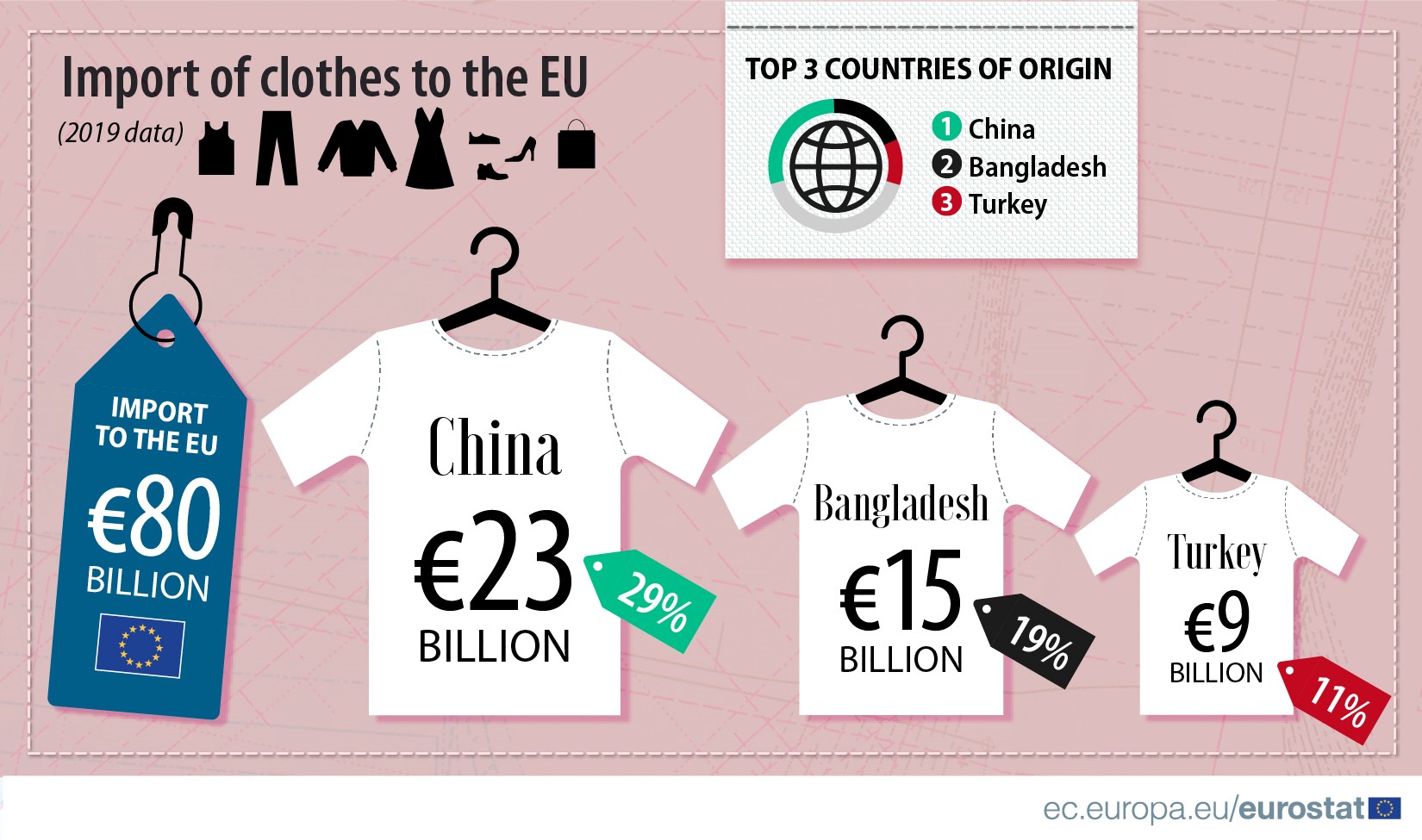The EU Member States imported clothes worth €154 billion in 2019, just over half of which came from non-EU Member States (52%, or €80 billion). Over the last decade, imports of clothing to the EU Member States increased in value by 62%.
€115 billion of clothes were exported by the EU Member States, the majority of which went to other EU Member States (69%, or €79 billion). This represents a 68% increase in the value of EU Member States’ intra-EU exports since 2009.
Although trade in textiles has increased significantly over the last decade, factory closures and transport restrictions related to the current coronavirus pandemic may affect this trend.
Germany, the largest importer of clothes
In 2019, almost €19 billion-worth of clothes were imported by Germany from non-EU Member States (23% of total extra-EU imports of clothes imports by value). This makes Germany the largest EU importer of clothing from non-EU countries, ahead of Spain (€13 billion, 16%), France (€11 billion, 14%), the Netherlands (€10 billion, 13%) and Italy (€8 billion, 10%).
China, the main origin of imported clothes
Imports of clothes from non-EU countries came mainly from China (€23 billion, or 29% of total extra-EU clothes), Bangladesh (€15 billion, 19%) and Türkiye (€9 billion, 11%), followed by United Kingdom (€5 billion, 6%), India (€4 billion, 5%), Cambodia and Vietnam (both €3 billion, 4%).
Source dataset: DS-645593
Italy, largest clothing exporter
Among EU Member States, Italy exported clothes worth €12 billion to non-EU Member States in 2019 (34% of total extra-EU exports of clothes by value). This makes Italy the largest extra-EU exporter of clothes, ahead of Germany (€6 billion, 16%), Spain (€5 billion, 15%), France (€4 billion, 13%) and the Netherlands (€2 billion, 5%).
Notes:
- The European Union (EU) includes 27 EU Member States. The United Kingdom left the European Union on 31 January 2020. Further information is published here.
- The EU 27 data reflect the political change in the EU composition so the UK is considered as an extra-EU partner country for the EU27. However, the UK was still part of the internal market for the period covered, meaning that data on trade with the UK were still based on statistical concepts applicable to trade between the EU Member States. As a consequence, while imports from any other extra-EU27 trade partner are grouped by country of origin, the UK data reflect country of consignment. In practice this means that the clothes imported by the EU27 from the UK were physically transported from the UK but part of these clothes could have been of other origin than the UK. For this reason data on trade with the UK are not fully comparable with data on trade with other extra-EU27 trade partners like China.
- Trade data: Due to quasi-transit trade, the adding of intra-EU trade and extra-EU trade may lead to double counting. An example of this would be clothes imported from China via the Netherlands, where they are cleared by customs for free circulation, before being dispatched to Germany. This would lead to the same clothes being counted as imports by both the Netherlands and Germany. More precisely, they would appear in the Netherlands' extra-EU imports from China and intra-EU exports to Germany and in Germany's intra-EU imports from the Netherlands.
To contact us, please visit our User Support page.
For press queries, please contact our Media Support.


